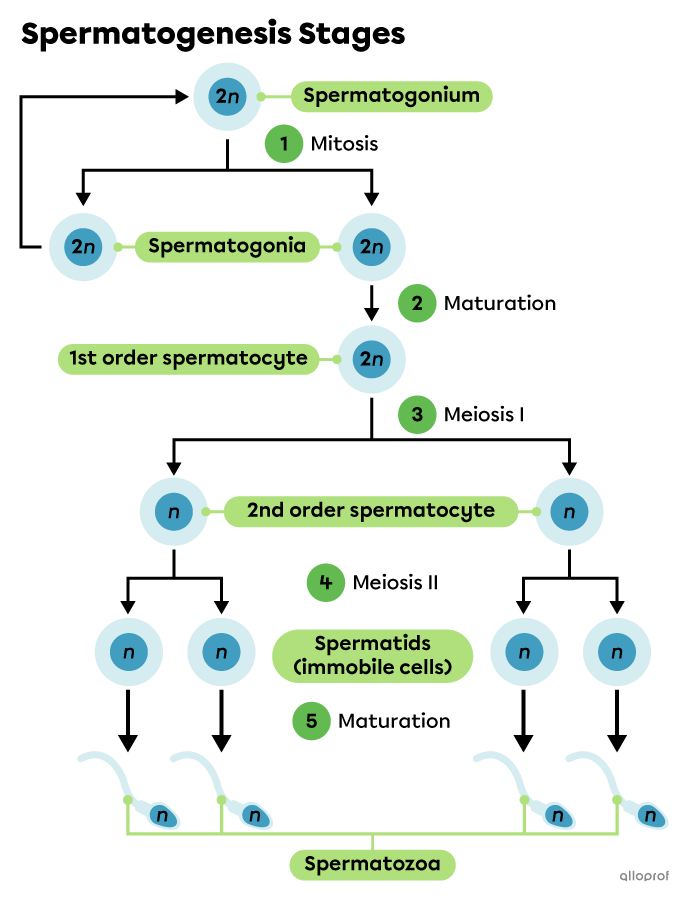Spermatogenesis is the process through which a male gamete (a spermatozoon) is produced.
Male gametes are produced in the seminiferous tubules of the testicles.

A male gamete goes through several stages of development: the spermatogonium, the first order spermatocyte, the second order spermatocyte, the spermatid and finally the spermatozoon.
The hormones responsible for the maturation of male gametes are luteinizing hormone (LH), follicle-stimulating hormone (FSH) and testosterone.
The following diagram shows the different stages of spermatogenesis. This process takes an average of 64 to 72 days.

-
Before birth, a finite amount of immature gametes are produced. These immature gametes are called spermatogonia.
From birth to puberty, spermatogonia undergo rounds of cell division (mitosis), which increases their quantity. -
From puberty onwards, half of the spermatogonia produced during mitosis migrate and develop into first order spermatocytes. A first order spermatocyte contains the complete genetic makeup, and is symbolized as 2n.
-
The first order spermatocyte undergoes cell division (meiosis I) to produce two daughter cells which are two second order spermatocytes. Each of these spermatocytes now contains half the genetic material, and is symbolized as n.
-
The second order spermatocytes undergo a second cell division (meiosis II). The 2 spermatocytes generate a total of 4 daughter cells: these are the spermatids.
-
After maturation, each spermatid becomes a spermatozoon (pl. spermatozoa). Spermatozoa then develop their characteristic structure including the head, the midpiece and the tail, called a flagellum.
At first, the spermatozoa are immobile. They can only move when they migrate out of the seminiferous tubules of the testicles into the epididymis. On average, over 400 million spermatozoa are produced every day.
Oogenesis is the process of producing a female gamete (an ovum), while spermatogenesis is the process of producing a male gamete (a spermatozoon). These processes have some things in common, but also several key differences as indicated in this comparative table.
| Oogenesis | Spermatogenesis |
|---|---|
| This process results in 4 daughter cells: 1 ovum and 3 polar bodies. | This process results in 4 daughter cells: 4 spermatozoa. |
| All oocytes are formed before birth. | Spermatozoa formation begins at puberty and continues throughout life. |
| An oocyte only becomes a mature ovum if it is fertilized. | A spermatocyte can become a mature spermatozoon, even if fertilization does not take place. |
Note: It is true that the testicles have the capacity to produce spermatozoa throughout life. However, the quality and quantity of spermatozoa produced decreases over time.